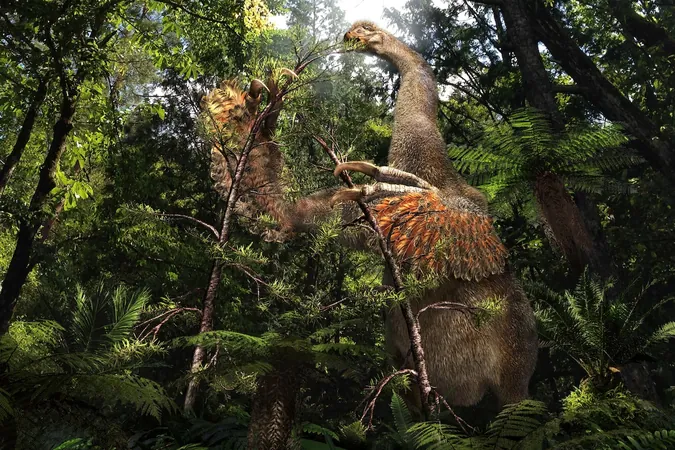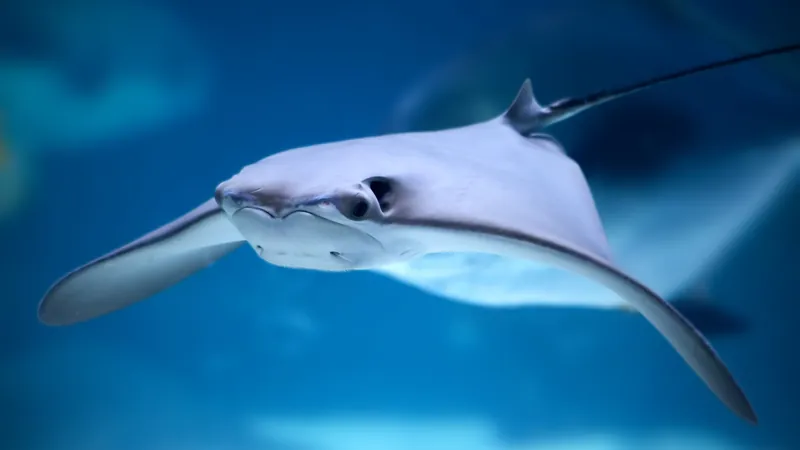
Discovery of 'Incredibly Rare' Mongolian Dinosaur with 'Big, Sharp, and Nasty' Claws Shakes the Scientific Community
2025-03-25
Author: Liam
Groundbreaking Discovery in Mongolia
A groundbreaking discovery has emerged from the Gobi Desert in Mongolia, where fossils uncovered during the construction of a water pipeline have unveiled the astonishing features of a rare dinosaur species, Duonychus tsogtbaatari. This unique creature boasted two-fingered hands armed with fearsome, curved claws, measuring up to a foot in length.
The Characteristics of Duonychus
Duonychus, which translates to "two claw," is estimated to have been around 10 feet (3 meters) long and weighed roughly 575 pounds (260 kg). This dinosaur roamed the Earth approximately 90 to 95 million years ago during the Cretaceous Period, sharing its habitat with a plethora of other reptiles, including armored dinosaurs, horned species, and even the early predecessor of the T. rex, known as Alectrosaurus.
A Unique Evolutionary Adaptation
Classified as a therizinosaur, Duonychus is part of a peculiar group of dinosaurs recognized for their large, pronounced claws. Until the discovery of Duonychus, every known therizinosaur possessed three clawed fingers. This two-fingered evolutionary adaptation provokes curiosity about its functional role in the creature's life.
Insights from Paleontologist Yoshitsugu Kobayashi
Paleontologist Yoshitsugu Kobayashi from Hokkaido University Museum in Japan, who led the research publication in the journal iScience, commented on the peculiar nature of therizinosaurs. "These dinosaurs are among the most bizarre," he stated. "Although they are related to carnivorous theropods, they resemble giant, feathered sloths. Duonychus takes this oddity a step further, sporting claws that are reminiscent of raptors but primarily used for a herbivorous diet."
Preservation and Significance of the Find
While the retrieved skeleton was not complete—lacking both its skull and legs—the arms and hands remained remarkably well-preserved. Notably, one of its claws retained a keratin sheath, similar to human fingernails, which extended its length by more than 40%. Kobayashi pointed out, "This keratin fossilization is exceedingly rare, providing us with an invaluable insight into how these dinosaurs might have utilized their hands."
Functional Uses of the Claws
The claws were likely multifunctional, serving primarily for grasping and pulling down branches to access leaves. Moreover, they may have been used in defense, grappling, and possibly even in social behaviors, such as species recognition. Co-author of the study, Darla Zelenitsky from the University of Calgary, observed, "These 'big, sharp, and nasty' claws suggest a complex set of behaviors."
Evolutionary Implications
The finding of Duonychus contributes to a broader understanding of evolution, particularly in digit reduction. Early vertebrates had eight digits, while early dinosaurs featured five. Over time, various lineages have evolved to have as few as two fingers, which now includes five independently evolved theropod lineages. This brings into question the evolutionary advantages of having fewer fingers.
Conclusion and Ongoing Research
Zelenitsky posited, "It’s intriguing to think that a dinosaur with fewer digits could still effectively forage among vegetation. This implies specialized feeding behaviors that diverged from those of their more finger-endowed relatives." Such discoveries continue to challenge and enrich our understanding of the dynamic and diverse world of dinosaurs, making each finding a step deeper into the intricacies of prehistoric life.









 Brasil (PT)
Brasil (PT)
 Canada (EN)
Canada (EN)
 Chile (ES)
Chile (ES)
 Česko (CS)
Česko (CS)
 대한민국 (KO)
대한민국 (KO)
 España (ES)
España (ES)
 France (FR)
France (FR)
 Hong Kong (EN)
Hong Kong (EN)
 Italia (IT)
Italia (IT)
 日本 (JA)
日本 (JA)
 Magyarország (HU)
Magyarország (HU)
 Norge (NO)
Norge (NO)
 Polska (PL)
Polska (PL)
 Schweiz (DE)
Schweiz (DE)
 Singapore (EN)
Singapore (EN)
 Sverige (SV)
Sverige (SV)
 Suomi (FI)
Suomi (FI)
 Türkiye (TR)
Türkiye (TR)
 الإمارات العربية المتحدة (AR)
الإمارات العربية المتحدة (AR)